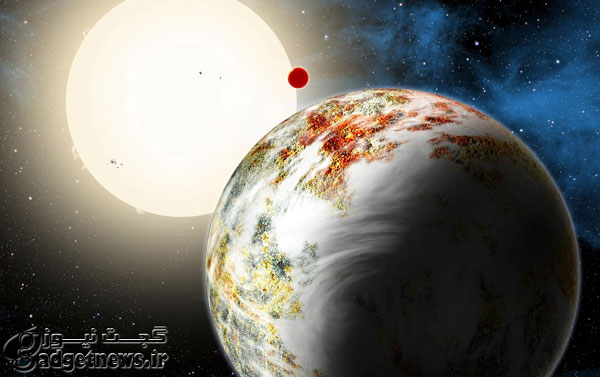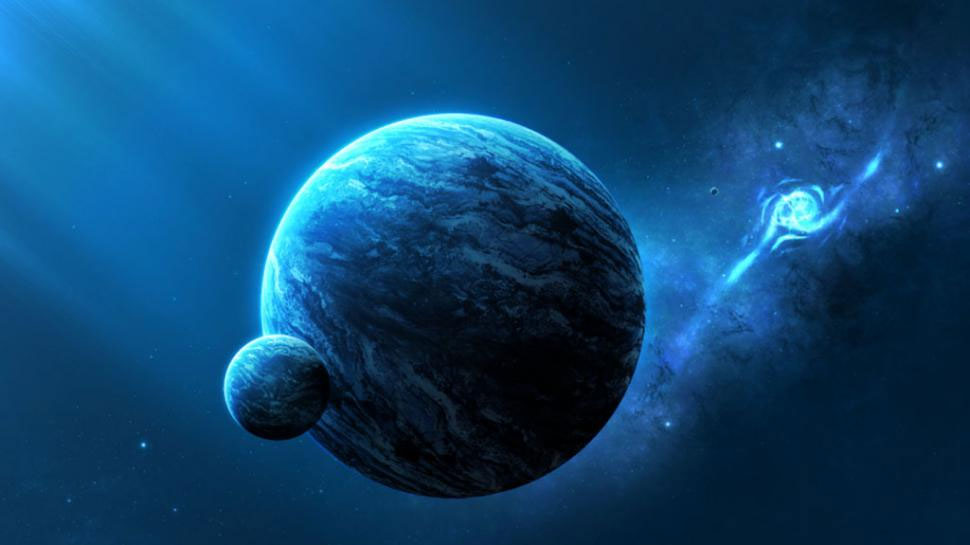
تلسکوپ فضایی کپلر با اینکه در حال حاضر مورد استفاده قرار نمیگیرد، هنوز هم میتواند دانشمندان و پژوهشگران فضایی را به وجد آورد. یکی از شگفتیهای ارائه شده از این تلسکوپ، معرفی سیارهی زمین مانندی است که فضانورادان مرکز Harvard-Smithsonian فیزیک نجومی (CfA)، آن را مگا زمین (mega-Earth) نامیدهاند. بنا به اظهارات بیان شده در میتینگ جامعهی فضانوردی آمریکا (AAS)، سیارهی Kepler-10c هفده برابر زمین وزن دارد و دانشمندان را به تفکر دوباره بر روی شکل گیری و احتمال حیات در کهکشان ما، فرامیخواند.
Kepler-10c به اندازهی 560 سال نوری از زمین فاصله داشته و در صورت فلکی اژدها واقع شده، جایی که به دور Kepler-10 با سالهای 45 روزه میگردد. این سیاره به ستارهی خود بسیار نزدیک بوده و از این رو بسیار داغ است، بنابراین ظرفیت نگهداری حیات بر روی خود را ندارد. این سیاره، ستارهی خود را با سیارهی Kepler-10b سهیم است که سیارهی مذکور از نوع آتشفشانی و سه برابر بزرگتر از زمین بوده و دارای سالهای 20 ساعته میباشد.
هنگامی که برای اولین بار Kepler-10c توسط کاوشگر فضایی کپلر شناسایی شد، اندازهی قطر آن 2.3 برابر زمین بدست آمد (حدود 29000 کیلومتر) که دانشمندان را به این تصور واداشت که این سیاره یک نپتون کوچک با ساختاری شبیه به یک غول گازی در سیستم خورشیدی است. اما ماهیت صخرهای بودن این سیاره تا زمان آغاز بررسیهای گروه CfA به سرپرستی فضانورد خاویر دوموسکو، پنهان ماند و موجب حیرت دانشمندان شد. این گروه با استفاده از دادههای کپلر به عنوان نقطهی آغاز تحقیقات خود، با ابزار HARPS-North بر روی تلسکوپ Telescopio Nazionale Galileo در جزیرههای قناری سیارهی مورد بحث را مشاهده نمودند. در حالی که کپلر تنها قادر به تعیین اندازهی Kepler-10c بوده، آنالیزهای تلسکوپیک CfA با ترکیب دادههای کپلر به این گروه امکان بدست آوردن جرم این سیاره را نیز داده است.

مقایسه ابعاد سیاره Kepler-10c با زمین
اکنون فضانوردان معتقدند که Kepler-10c هفده برابر زمین وزن دارد که با در نظر گرفتن قطر آن، نتیجهای چشمگیر به نظر میرسد. سیارههای بزرگ گازی علاوه بر اندازهی بزرگ، درواقع خیلی متراکم نیستند، زیرا از اتمسفرهای متنوع از هیدروژن و هلیوم حول یک هستهی کوچک سنگی ساخته شدهاند. برای مثال سیارهی زحل بسیار سبک وزن بوده، به طوری که میتواند بر روی آب شناور بماند. اما سیارهی تازه کشف شدهی Kepler-10c بسیار محکم است که برای سیارهای با این اندازه برخلاف گفتههای تا به حال اثبات شده میباشد.
بنا به تئوری حال حاضر، چنین سیارهای نباید وجود داشته باشد. گروه CfA گفته است که هر سیارهای با این اندازه دارای جاذبهی کافی برای جذب اتمسفر بزرگ به اطراف خود میباشد که آن را به یک سیارهی غول پیکر گازی مانند مشتری و یا حتی بزرگتر تبدیل کند. اما این سیاره به نظر یک غول سنگی است. اگر وجود و ماهیت این سیاره به اثبات کامل برسد، پس از آن پرسشهای جدید در مورد چگونگی شکلگیری سیارهها به وجود خواهد آمد.
دوموسکو در این مورد گفته است: ” Kepler-10c در طول سالها اتمسفر خود را از دست نداده است.” وی ادامه داد: “این سیاره به اندازهی کافی بزرگ است تا اتمسفری را برای خود حفظ نماید.”
علاوه بر این باید اشاره کرد که سیستم خورشیدی Kepler-10 یازده میلیارد سال عمر دارد، به این معنی که تنها سه میلیارد سال پس از انفجار بزرگ (بیگ بنگ) شکل گرفت. وجود Kepler-10c با ساختار صخرهای و سنگی خود نشاندهندهی آن است که عناصر سنگین منجر به ساخت چنین سیاراتی در زمانهای خاص شدهاند. اگر این ادعا درست باشد، گروه CfA بر وجود سیارههای قابل سکونتی که بسیار قدیمی بوده، باور دارند.
منبع : gizmag
Despite being currently offline, the Kepler space telescope is still turning up surprises. One of them is an Earth-like planet that’s so large that astronomers at the Harvard-Smithsonian Center for Astrophysics (CfA) call it a “mega-Earth.” Revealed in a press conference at a meeting of the American Astronomical Society (AAS), planet Kepler-10c is 17 times heavier than the Earth, and may require scientists to rethink their ideas on planet formation and the likelihood of life in our galaxy.
Kepler-10c lies 560 light-years from Earth in the constellation Draco, where it orbits Kepler-10 with a year of 45 days. This makes it so close to its star that it’s too hot to sustain life. It shares the star system with Kepler-10b, which is a “lava world” three times the size of Earth and has a year only 20 hours long.
When first discovered by the Kepler space probe, Kepler-10c’s diameter was measured at 2.3 times that of Earth (about 18,000 mi / 29,000 km), which led scientist to think that it was a “mini-Neptune” with a structure similar to that of the gas giants of the Solar System. But the true “mega” nature of the planet has since been uncovered by a CfA team led by astronomer Xavier Dumusque. Using the Kepler data as a starting point, the team looked at Kepler-10c with the HARPS-North instrument on the Telescopio Nazionale Galileo in the Canary Islands. While Kepler was only able to determine the size of Kepler-10c, the telescopic analysis by CfA combined with the Kepler data allowed the team to deduce the mass as well.
Astronomers now believe that Kepler-10c is 17 times heavier than the Earth, which, with its diameter, is significant. Despite their great size, gas giants are actually not very dense because of they’re made up of vast atmospheres of hydrogen and helium around a small rocky core. The planet Saturn, for example, is so light that it would float in water – if you could find a large enough bathtub. Kepler-10c, on the other hand, is solid, which is unheard of for a planet that size.
According to current theory, such a planet shouldn’t exist. The CfA team says that any planet that size would have enough gravity to collect a massive atmosphere around it, turning it into a gas giant the size of Jupiter or larger. This one appears to be a giant ball of rock. If this so, then it raises questions about how planets form.
“Kepler-10c didn’t lose its atmosphere over time,” says Dumusque. “It’s massive enough to have held onto one if it ever had it. It must have formed the way we see it now.”
In addition, the Kepler-10 star system is 11 billion years old. This means it formed only 3 billion years after the Big Bang. The presence Kepler-10c with its rocky structure indicates that the heavy elements needed to make such a planet were available earlier than thought. If this is the case, then the CfA team says that there may be habitable planets that may be very old, which increases the chances of life being found elsewhere in the universe.
 گجت نیوز آخرین اخبار تکنولوژی، علم و خودرو
گجت نیوز آخرین اخبار تکنولوژی، علم و خودرو 





